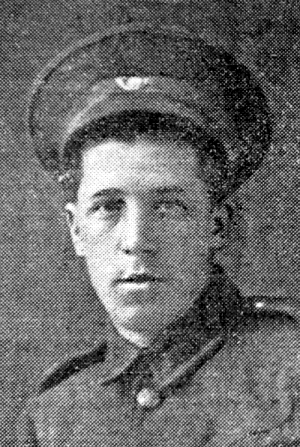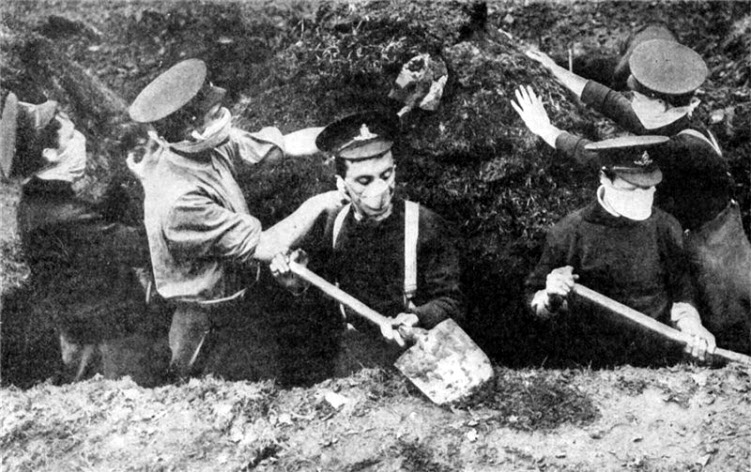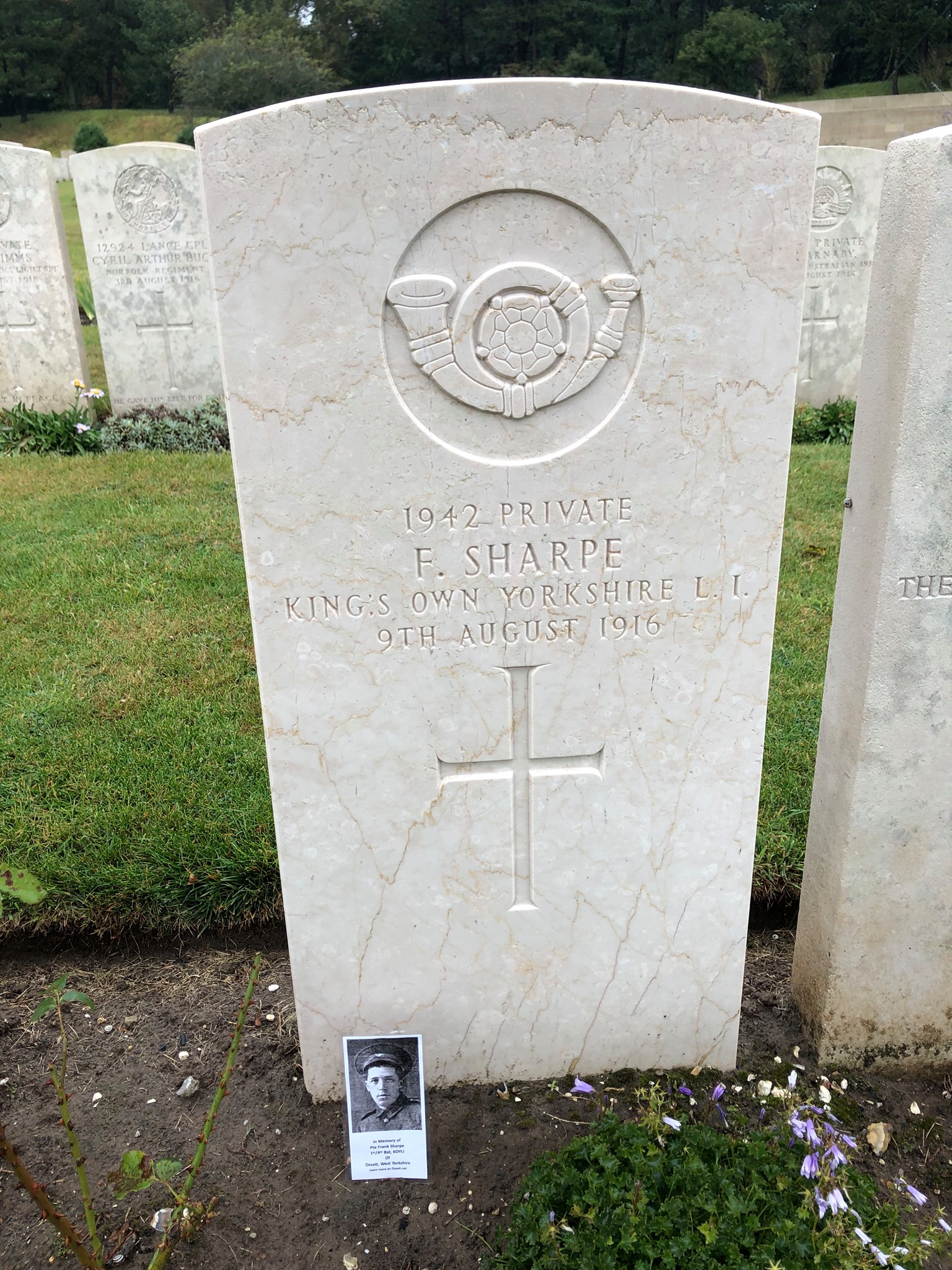
Frank Sharpe was born in Gawthorpe, Ossett in April 1890, and baptised at the Gawthorpe Methodist New Connexion Chapel on the 18th September 1890. He was the fourth child and second son of ten children born to James Sharp and his wife, Sabra (nee Kemp), of High Street, Gawthorpe who married on the 24th December 1881 at Dewsbury All Saints Parish Church.
In 1891, wool extractor James Sharpe and his wife, Sabra, were living with their family, including 11 month-old Frank at High Street, Gawthorpe. The Sharpe family were at the same address in 1901 when James was working as a coke oven man at a colliery and Frank, now aged 10, was still at school.
By 1911 the family had moved to Syke Ing Terrace, Earlsheaton, but Frank Sharpe had moved to Royston, Barnsley and was living with his sister and brother in law whilst working as a labourer in a coke works.
Frank Sharpe’s army service record has not survived, but it is known that he enlisted in Ossett, and joined the 1st/4th Battalion of the King’s Own Yorkshire Light Infantry with service number 1942. He embarked for France on the 13th April 1915 and died of his wounds on the 9th August 1916.
Private Frank Sharp was posthumously awarded the British and Victory medals, and also the 1914/15 Star, to acknowledge his service overseas prior to the 31st December 1915.
The 1/4th Battalion, Kings Own Yorkshire Light Infantry was a unit of the Territorial Force with HQ in Wakefield, serving with 3rd West Riding Brigade, West Riding Division. When war broke out in August 1914, the units of the Division had just departed for their annual summer camp, they were at once recalled to their home base and mobilised at once for war service, moving to Doncaster. In November they moved to Gainsborough and in February 1915 to York to prepare for service overseas, those men who had not volunteered for Imperial Service transferred to the newly formed 2/4th Battalion. They proceeded to France, from Folkestone landing at Boulogne on the 12th of April 1915 and the Division concentrated in the area around Estaires. On the 15th of May the formation was renamed 148th Brigade, 49th (West Riding) Division. Their first action was in the The Battle of Aubers Ridge in May 1915.
In 1916 They were in action in the Battles of the Somme. In 1917 they were involved in the Operations on the Flanders Coast and the The Battle of Poelcapelle during the Third Battle of Ypres. In 1918 they were in action during the Battles of the Lys, The pursuit to the Selle and the Final Advance in Picardy. At the Armistice, The 49th Division was resting at Douai, demobilisation began in early 1919.
Private Frank Sharpe died in hospital at Etaples on the 9th August 1916, which suggests that he was wounded some days previously. On the 1st August 1916, the 1st/4th Battalion of KOYLI were in Aveluy Wood, Hedauville. The “War Diary” for the 1st/4th Battalion KOYLI tells us this:
“1st August 1916 – Battalion furnishing working parties for front line. Casualties 5 other ranks wounded.”
“2nd August to 6th August 1916 – Battalion moved to billets in Hedauville. Battalion in Rest Billets and Training.”
“7th August 1916 – Battalion moved to Bivouacs in Aveluy Wood.”
“8th August 1916 – Battalion furnishing Working parties under Royal Engineers – Work on Parallels – Casualties 2 other ranks wounded.”

Above: British troops digging trenches during WW1.
Private Frank Sharpe, aged 26 years, died on the 9th August 1916. He is buried at grave reference IX. D. 5A at the Etaples Military Cemetery, 1 Pas de Calais, France. Etaples is a town about 27 kilometres south of Boulogne. The Military Cemetery is to the north of the town, on the west side of the road to Boulogne.
During the First World War, the area around Etaples was the scene of immense concentrations of Commonwealth reinforcement camps and hospitals. It was remote from attack, except from aircraft, and accessible by railway from both the northern or the southern battlefields. In 1917, 100,000 troops were camped among the sand dunes and the hospitals, which included eleven general, one stationary, four Red Cross hospitals and a convalescent depot, could deal with 22,000 wounded or sick. In September 1919, ten months after the Armistice, three hospitals and the Q.M.A.A.C. convalescent depot remained.
The cemetery contains 10,771 Commonwealth burials of the First World War, the earliest dating from May 1915. 35 of these burials are unidentified.
Hospitals were again stationed at Etaples during the Second World War and the cemetery was used for burials from January 1940 until the evacuation at the end of May 1940. After the war, a number of graves were brought into the cemetery from other French burial grounds. Of the 119 Second World War burials, 38 are unidentified.
Etaples Military Cemetery also contains 662 Non Commonwealth burials, mainly German, including 6 unidentified. There are also now 5 Non World War service burials here.
 Commonwealth War Graves Commission Headstone (Photograph courtesy of Mark Smith)
Commonwealth War Graves Commission Headstone (Photograph courtesy of Mark Smith)
References: